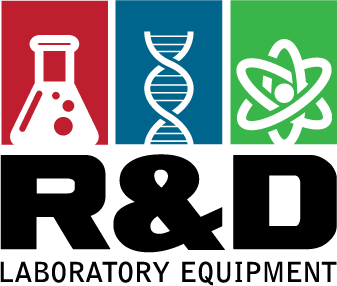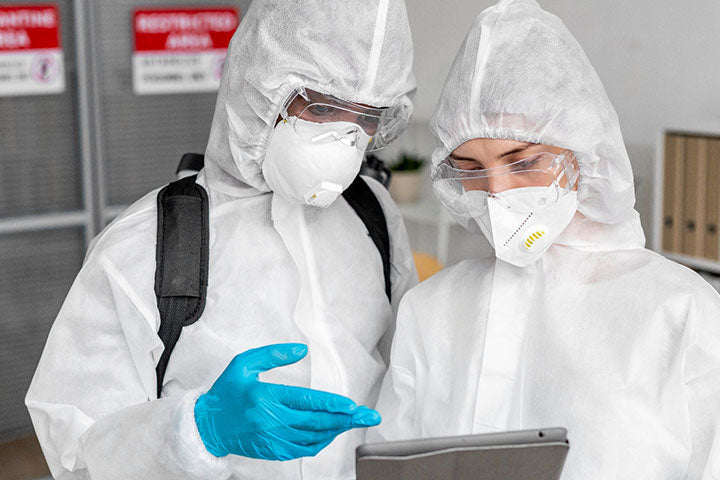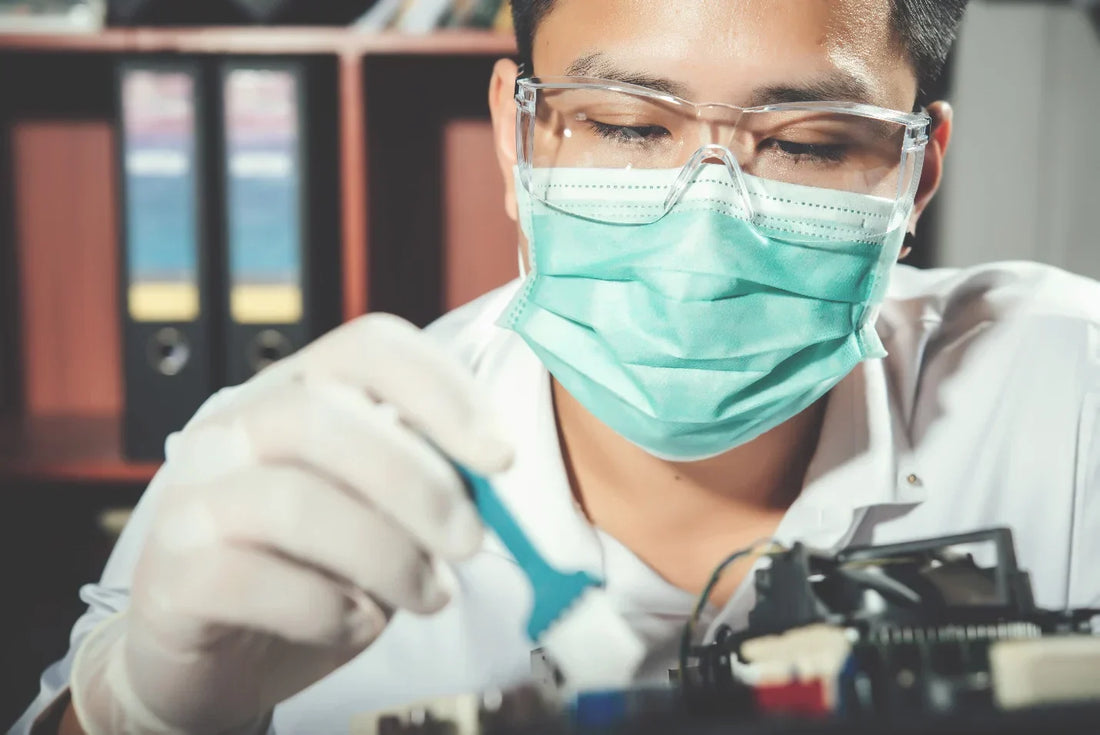Step-by-Step Guide to NSF Biosafety Cabinet Certification

Summary:
NSF certification ensures biosafety cabinets meet NSF/ANSI 49 standards for containment, filtration, and user safety. The certification involves pre-assessment, performance testing, documentation, and annual renewal. Only NSF-accredited certifiers can issue valid NSF certifications, and companies like R&D Laboratory Equipment offer these services.
Introduction
Biosafety cabinets (BSCs) are essential safety equipment in laboratories that handle infectious agents, hazardous materials, and sensitive biological work. These enclosed, ventilated workspaces are designed to protect the user, the product, and the environment from contamination. However, to maintain their protective capability, BSCs must function as intended, which is why certification is essential.
Biosafety cabinet certification is the process of testing and verifying that a biosafety cabinet is functioning correctly and safely per specific performance standards. The NSF/ANSI 49 is the primary standard for certifying Class II biosafety cabinets in the United States. This standard is a regulatory requirement that all laboratories and medical facilities are expected to adhere to.
In this article, you will learn what certification involves, who is qualified to perform it, and how to maintain compliance year after year.
What is NSF Biosafety Cabinet Certification?
NSF Biosafety Cabinet (BSCs) certification refers to the NSF/ANSI 49 standard, which outlines the minimum requirements for biosafety cabinet design, construction, and performance to provide personnel, product, and environmental protection, as well as reliable operation and durability.
BSC certification tests are recommended whenever the equipment is transported or relocated. Field tests must also be performed at the time of installation and annually, after the filters are changed, when maintenance repairs are made to internal parts, or when the cabinets are relocated.
Who Needs Biosafety Cabinet Certification?

Biosafety cabinet (BSCs) certification is essential for any laboratory that uses a Class II BSC to handle infectious or toxic materials. Institutions that require BSC certification include:
-
Clinical Laboratories: This includes hospitals, diagnostic laboratories, and pathology departments that handle infectious samples.
-
Research Facilities: This includes biomedical, microbiological, and virology labs in public and private institutions.
-
Biotech and Pharmaceutical Companies: This includes those engaged in sterile drug compounding, vaccine development, or gene therapy.
-
Universities and academic institutions, particularly those with BSL-2 or BSL-3 labs conducting biological research.
-
Government and Military Labs: This includes public health, biodefense, and agricultural agencies.
Biosafety Cabinet Certification Requirements
Understanding biosafety cabinet (BSC) certification requirements is crucial, which is why R&D Laboratory Equipment experts offer comprehensive testing, certification, and maintenance services. The minimum required tests that must be performed on a BSC for it to be certified include:
-
Inflow Velocity Tests: This ensures that proper air inflow is maintained for operator and environmental protection.
-
Downflow Velocity Tests: This measures the velocity of air moving through the cabinet. It also ensures that the air is unidirectional and functioning as designed, preventing cross-contamination and providing product protection.
-
HEPA Filter Test: This test checks the HEPA filters to ensure they provide the required filtration, preventing product and environmental contamination while keeping personnel safe.
-
Airflow Smoke Patterns Test: This test verifies the direction of airflow using a small source of visible fog. The fog will reveal any dead spots or air escaping from the front of the cabinet instead of through the exhaust.
-
Site Installation Tests: This ensures that the BSC is correctly integrated into your facility according to NSF and OSHA standards.
Step-by-Step Certification Process
Certifying a biosafety cabinet involves many processes, from the pre-assessment stage to the recertification or renewal stage. You should understand that BSC certification is not a one-time process, but an ongoing regulatory requirement. Below is a detailed look at each stage of the process:
1. Pre-Assessment
Before any testing is performed, your technician will conduct a visual inspection and gather relevant information, including the type and application of the cabinet, its physical condition, signs of damage, and review the maintenance and certification history. In this stage, we identify potential issues that may affect performance testing.
2. Performance Testing
In this stage, we start testing the various components, functionalities, and safety features of the cabinet. Required NSF tests for this stage include inflow and downflow velocity tests, HEPA filter leak test, smoke pattern tests, alarm and interlock tests, and electrical safety tests.
3. Documentation & Reporting
After the tests have been carried out, your technician will prepare a certification report and documentation with the results. A certification label will detail:
-
The certification status
-
Date and expiration of said certification
-
The next due date
-
The name and contact info of the certifier
An additional test report with more comprehensive details will be provided. This report includes all test results and reference standards, instrument model numbers, calibration dates, noted deficiencies, and corrective actions taken. This documentation is required for regulatory audits and internal quality assurance.
4. Certification Renewal & Timeline
Biosafety cabinets must be recertified annually or in specific situations, such as:
-
After relocation, because moving a cabinet can affect its airflow balance.
-
After HEPA filter replacement.
-
After maintenance or repairs that affect airflow or containment
Role of Calibration in Certification
Calibration plays a crucial role in ensuring the accuracy and reliability of laboratory instruments, which are essential for scientific experiments and research. Without accurately calibrated instruments, all BSC test results – no matter how thoroughly performed – become unreliable and may lead to unsafe conditions or noncompliance with NSF/ANSI 49 standards.
Here are some reasons why biosafety cabinet calibration matters:
-
Ensuring Data Accuracy: BSC testing often involves collecting data on environmental performance and resource consumption. Calibration ensures that the instruments used to collect this data are accurate and reliable, protecting the integrity of the process.
-
Regulatory Compliance: Calibration is crucial for meeting regulatory requirements, including NSF/ANSI 49, OSHA, and ISO standards.
-
Personnel Safety: Unreliable testing equipment can lead to false positives and unreliable results. This poses a serious danger to lab personnel handling hazardous chemicals, toxic materials, or sensitive biological work.
Training for Biosafety Cabinet Certification

Proper training is a requirement for anyone who wants to certify a biosafety cabinet. Biosafety cabinet (BSC) certification requires in-depth knowledge of airflow dynamics, filtration systems, testing protocols, and compliance with NSF/ANSI 49 standards.
The key components of biosafety cabinet certification training include:
-
Understanding Biosafety Cabinets: The training covers various classes and types of biosafety cabinets, their airflow patterns, and the specific applications for which they were designed.
-
Mastery of NSF/ANSI 49 Standards: A core component of BSC certification training is understanding and applying the standards outlined in NSF/ANSI 49, which specify the design, construction, and performance requirements of Class II BSCs.
-
Practical Skills: Trainees gain hands-on experience in performing essential tests like inflow and downflow velocity tests, smoke pattern tests, HEPA filter leak tests, and site assessments.
-
Maintenance and Troubleshooting: Training includes instructions on proper cleaning, decontamination procedures, and troubleshooting common issues with biosafety cabinets.
-
Safe Work Practices: Participants learn about safe work practices within a BSC, including emergency procedures and the use of personal protective equipment (PPE).
Choosing the Right NSF Certified Biosafety Cabinet
Choosing the right NSF-certified biosafety cabinet involves considering several factors, including the level of protection required, the type of work being done, available space, and relevant safety standards.
Level of Protection
The most critical factor for selecting the right biosafety cabinet (BSC) is the level of protection that it provides. This is determined by the biosafety level (BSL) required for the specific microorganisms being handled. Biosafety levels range from BSL-1 (low risk) to BSL-4 (high risk).
Selecting the appropriate biosafety cabinet not only enhances the functionality of your laboratory and aids research but also ensures compliance with regulatory standards and minimizes the risks of exposure to infectious agents, safeguarding the lives and health of personnel.
Certification
Certification ensures that your cabinet has been tested and meets the required safety and performance standards. It also gives lab operators an extra peace of mind and confidence that the equipment will ensure their safety, protecting them and the environment from exposure to hazardous materials.
Size and Configuration
Selecting the right biosafety cabinet involves more than just measurements; it also requires considering the available space, the nature of your work, and the potential for future expansion.
Conclusion
NSF biosafety cabinet certification is more than a regulatory requirement. It is a vital component of laboratory safety, performance, and scientific success. By following the NSF/ANSI 49 standards, you can ensure that biosafety cabinets effectively protect personnel, products, and the environment from biological hazards.
Whether you are installing new equipment, renewing certification, or seeking to become an NSF biosafety cabinet certifier yourself, you need accurate information to stay compliant. R&D Laboratory Equipment is your guide for all things related to biosafety hood certification. Contact us now.
FAQs
1. How often should biosafety cabinets be certified?
Biosafety cabinets should be certified at least annually, as well as after installation, relocation, and any repair that may affect their performance.
2. What is included in biosafety cabinet certification testing?
Biosafety cabinet certification testing includes downflow and inflow velocity tests, smoke pattern tests, HEPA filter integrity tests, alarm calibration tests, and site assessments.
3. Can I get trained to become an NSF biosafety cabinet certifier?
Yes, you can get trained to become an NSF biosafety cabinet certifier. NSF offers a basic accreditation program for field certifiers, which includes training and testing focused on Class II Type A biosafety cabinets.
4. What is the cost of biosafety cabinet certification?
The cost of biosafety cabinet certification typically ranges from $300 to $600 per cabinet, depending on the cabinet type and size, testing standards, location, urgency, scale of repairs and adjustments, and the service provider.
5. Is R&D Laboratory Equipment certification equivalent to NSF certification?
R&D Laboratory Equipment employs NSF-certified technicians and performs testing in accordance with NSF/ANSI 49, OSHA, CDC/NIH, and manufacturer standards.
6. What is NSF certification?
NSF International provides NSF certification. It signifies that a product has been tested and meets strict standards for public health and protection.
7. When should a qualified technician certify a biosafety cabinet?
A qualified technician should certify a biosafety cabinet upon installation, after relocation, following a major repair, or at least once annually.
8. How long does NSF certification take?
Biosafety cabinet NSF certification typically takes 2 hours per cabinet, depending on the cabinet's size, condition, and type.
9. What is the first step to take before starting work in a biological safety cabinet?
The first step is to prepare and decontaminate the work area inside the cabinet properly. Turn on the cabinet and activate the blower and lighting for at least 5 to 10 minutes before starting work.
10. What is the life expectancy of a biosafety cabinet?
The typical lifespan of a biosafety cabinet is 15 to 20 years; however, some units can remain functional for 25 years or more if they are correctly maintained and serviced.






